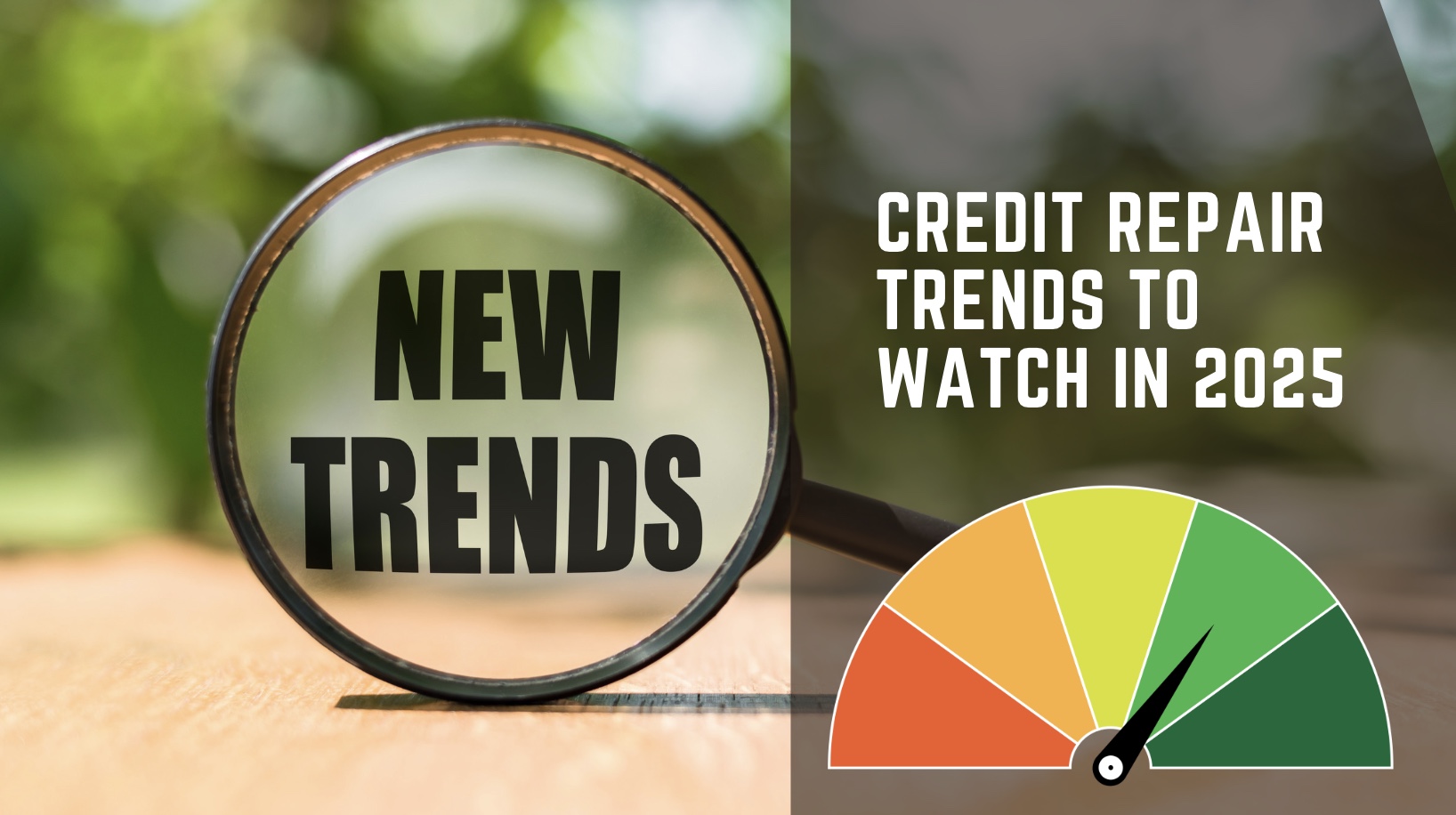Big news, folks—credit repair is getting a serious glow-up in 2025. We’re talking new tools, tougher rules, and smarter ways to get your credit score back on track. After nearly 20 years in the credit repair biz, I can say—this is huge.
Why does it matter? Because your credit score affects your financial wellness in all aspects. It’s the key to better loans, lower interest rates, and, let’s face it, a little less stress. The changes coming this year (and the future) are designed to make credit repair easier, faster, and fairer for everyone.
Here’s the tea: stricter rules are cracking down on shady practices, and cutting-edge tools like AI and automation are making it easier than ever to clean up your credit.
Whether you’re drowning in debt, fighting collections or just trying to bump up your score, these updates could make a massive difference.
In this article, we’ll break it all down:
- How Technology is Making Credit Repair Easier
- What Tighter Regulations Mean For You
- A Booming Market with Wider Reach
- Credit Improvement Meets BNPL
- What These Trends Mean for Consumers and Businesses
Ready to take charge of your financial future?
How Technology is Making Credit Repair Easier
Fixing your credit doesn’t have to be so hard anymore. Thanks to new technology, it’s now faster and less stressful. Tools powered by AI can analyze your credit report and help you fix mistakes with just a few clicks. Whether you’re trying to rebuild after a financial setback or just want to improve your score, these tools make credit repair something you can handle with confidence.
How AI is Changing Credit Repair
You’ve heard of tools like ChatGPT making life easier, right? Now AI is doing the same for credit repair. These smart tools can quickly look through credit histories, find errors, and even predict ways to improve your score. What used to take hours can now be done in minutes. For consumers, this means faster and more accurate results. For businesses, it makes offering credit repair services easier and more affordable. AI is making the whole process better for everyone.
Putting Consumers in Control
One of the biggest trends in credit repair is giving people more control over their credit. New platforms make it easy to understand your credit report and take action to improve it. Real-time alerts, simple dashboards, and step-by-step guides help you track progress and even negotiate with creditors. These tools take the confusion out of credit repair, so you can feel more confident about managing your financial future.
Tech that Ensures Everything’s Done Right
Technology is also helping make credit repair more accurate and transparent. Automated systems can spot mistakes and keep everything in line with legal standards. Real-time updates and credit monitoring tools mean fewer errors and less guesswork.
Credit repair has come a long way, and with these new tools, it’s easier than ever to take charge of your credit and your future.
Good Read: How AI Is Revolutionizing Credit Dispute Processing
Another thing to look forward to and why now is the best time to consider credit repair more than ever, is better consumer regulations for credit repair.
What Tighter Regulations Mean For You
New regulations in credit repair are reshaping the industry to prioritize transparency, consumer protection, and ethical practices. These rules are designed to address long standing issues, such as misleading claims and predatory practices, while fostering greater accountability among credit repair companies.
At ASAP Credit Repair, we're ready for these changes and fully committed to aligning with the new standards to continue providing trustworthy and effective services. If you want to learn more, read our guide about top consumer rights against debt collectors.
Here's a closer look at the key changes:
Upfront Fees Are Restricted
One of the most significant changes prohibits credit repair companies from charging fees before providing measurable results. Previously, many companies required payment upfront, often without delivering on their promises. Now, companies must show proof of completed work, such as the removal of an inaccurate item from a credit report, before requesting payment.
Clearer Disclosures
Companies are now required to provide clear and concise information about their services, costs, and limitations. This includes explaining that credit repair is not a guaranteed process and that consumers have the right to dispute inaccuracies on their own without paying for third-party services. These disclosures aim to prevent consumers from being misled by exaggerated claims or unrealistic guarantees.
Stricter Advertising Standards
Misleading marketing tactics are being targeted with stricter advertising rules. Companies can no longer make false promises, such as guaranteeing a specific credit score improvement or suggesting they can erase legitimate negative information from credit reports. Any claims made in their advertising must be substantiated and truthful.
Enhanced Consumer Protections
The new rules provide extra safeguards for consumers against scams and fraudulent practices. For example, companies are required to maintain transparent contracts that detail the specific services they will perform and any associated costs. Consumers also have the right to cancel these contracts within a set period (typically 3 to 5 days) without penalty.
Greater Monitoring and Enforcement
Regulatory bodies, such as the Federal Trade Commission (FTC) and the Consumer Financial Protection Bureau (CFPB), are increasing oversight of credit repair companies. This includes conducting audits, investigating complaints, and imposing penalties on businesses that fail to comply with the new regulations. This tighter supervision aims to ensure that companies operate fairly and ethically.
What This Means
For consumers, these changes ensure a safer and more ethical credit repair environment. They can now feel more confident that the services they are paying for are legitimate and effective.
For businesses, compliance with these regulations is crucial. Adhering to the new standards not only avoids penalties but also builds trust and credibility in a highly scrutinized industry.
These reforms are designed to strengthen consumer protection, ensure fair practices, and foster greater accountability across the industry. What other changes can we anticipate in the world of credit repair?
A Booming Market with Wider Reach
Numbers don’t lie—the credit repair services market is growing rapidly. From $4.84 billion in 2024 to an expected steady rise in the years to follow, the industry’s expanding footprint shows no signs of slowing down.
Why Is the Market Growing So Fast?
One big reason for this growth? Tiered pricing models. By offering different pricing options, credit repair companies are making their services accessible to more people. Whether someone needs just a little help or extensive support, there’s now a plan for everyone.
A Solution for All Financial Needs
Tiered pricing means businesses can cater to a wide range of customers. This flexibility is a game changer for individuals with varying financial challenges. It’s helping more people access the tools they need to repair their credit and take control of their financial future.
The expanding footprint of credit repair services is making it easier than ever for people to get the support they need—no matter where they’re starting from. This is a market worth watching.
Credit Improvement Meets BNPL
BNPL or "buy now, pay later" has become a go-to payment option, especially for younger consumers looking for flexibility. But here’s the twist: when paired with smart credit improvement strategies, it can do more than just spread out payments—it can actually help boost your creditworthiness.
Here’s how it works: On-time payments through certain BNPL services can positively impact your credit score, giving you the chance to turn everyday purchases into opportunities for financial growth. Imagine buying that new laptop or those must-have sneakers while also building a stronger credit profile!
But here’s the catch: not all BNPL providers report to credit bureaus. That’s why it’s important to choose the right service and be mindful of your repayment habits. Late payments could hurt more than help, after all.
So, what’s your take? Have you tried using BNPL to improve your credit? Share your experience—we’d love to hear how it’s working for you!
What These Trends Mean for Consumers and Businesses
The developments in credit repair are about more than just fixing errors—they're about creating long-term financial stability. As credit scores increasingly influence everything from loan approvals to job applications, staying ahead of these trends is crucial.
For consumers, 2025 offers a chance to take control of their financial futures with better tools and protections in place. For businesses, the opportunity lies in delivering innovative solutions while staying compliant with evolving regulations.
Stay informed, stay prepared, and seize the opportunities that these exciting changes offer. The future of credit repair is here—are you ready? Sign up now for a free credit repair service!

